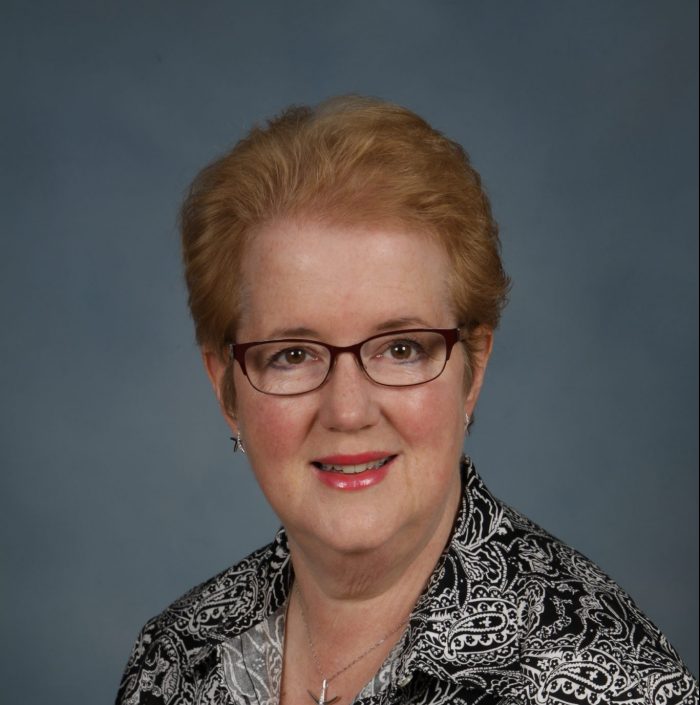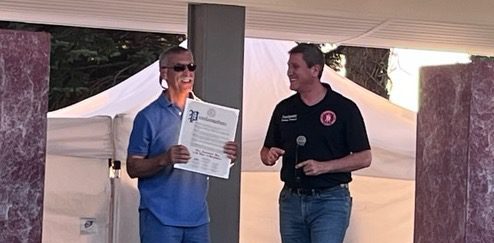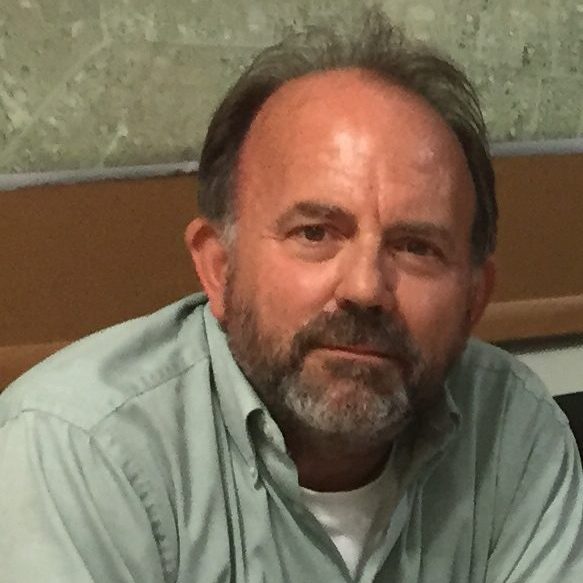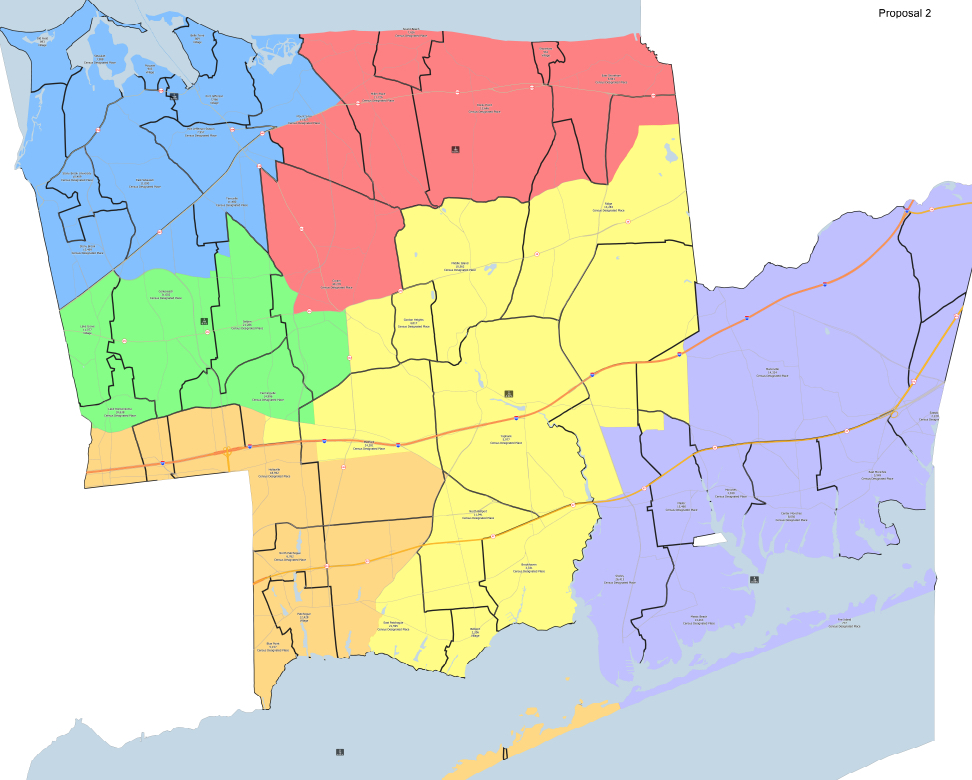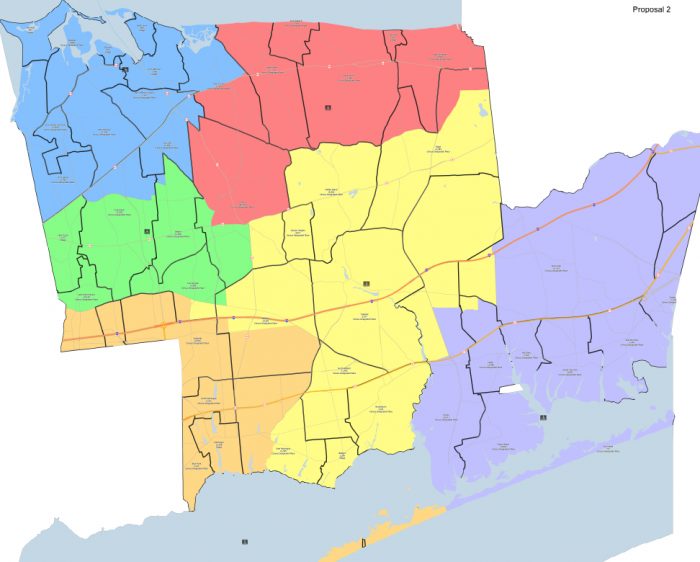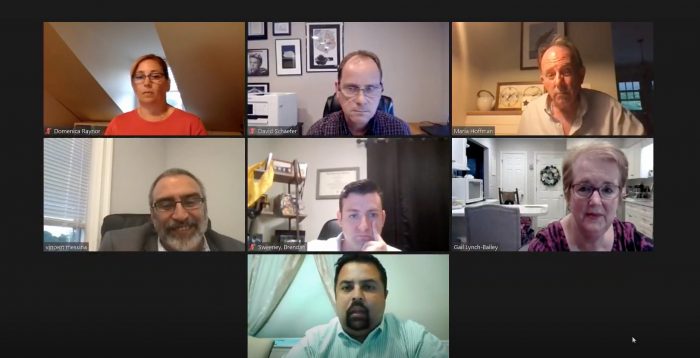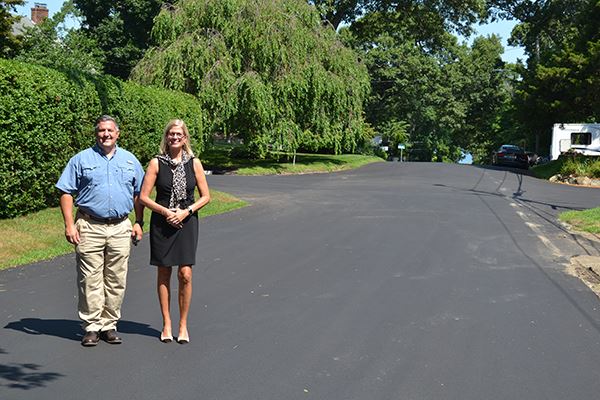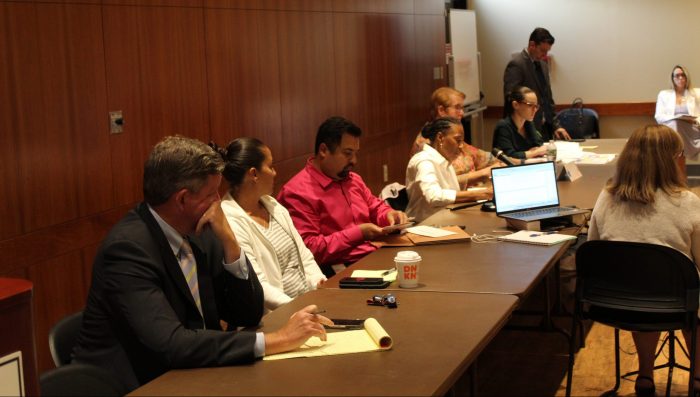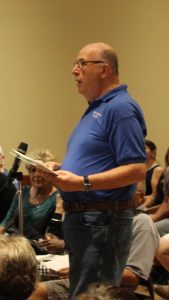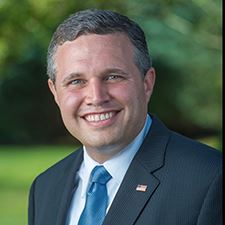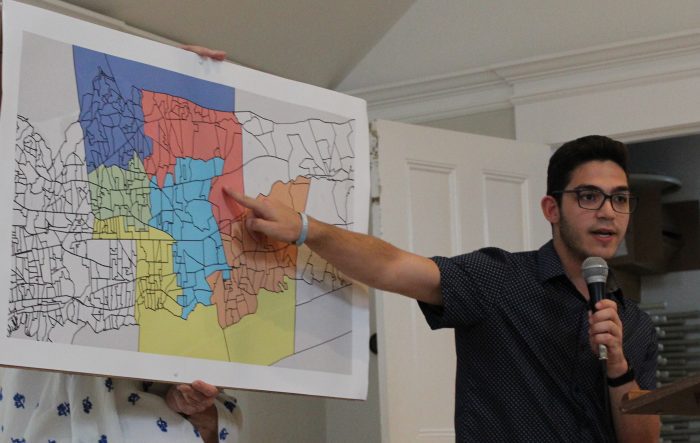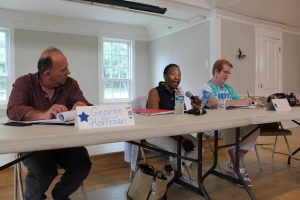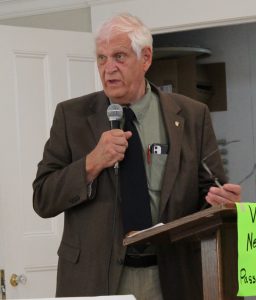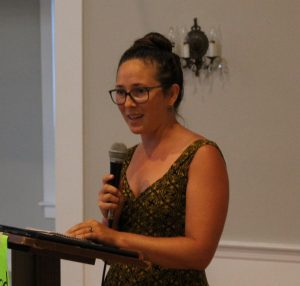Gail Lynch-Bailey, president of the Middle Island Civic Association, has the unique distinction of serving on the Brookhaven Redistricting Committee both in 2012 and this year. In an exclusive interview, she discusses the breakdown of norms, procedures and public confidence as the committee works to meet its Sept. 15 deadline.
What is your background, and how did you get involved in the redistricting process?
I am the president of the Middle Island Civic Association. As such, I qualify to be a civic representative on the redistricting committee. I did it 10 years ago in the same vein: I was a Democratic appointee then and am one now.
What are your thoughts on how this year’s redistricting process has developed?
This 2022 redistricting process has been contentious and frustrating. It has caused me to rethink a lot of recommendations for the next time the town undergoes this process. I don’t think that we had enough time with the professional mapmaker. As commissioners, we needed a session early on in the process. Instead, we had six meetings with no maps, then two maps appeared, and then we had six hearings based on those maps — which were false maps because we had no input into them.
Now, we’re struggling to see if we get some public hearings on the mapmaker’s three maps we have legitimately requested. I sincerely hope we can do that because I think that’s part of our obligation to the public.
What are some key differences between the redistricting process this year and the one from 2012?
Ten years ago, we met in person as a commission and introduced ourselves. We learned a lot about each other and then had an informational and educational session with the counsel, Jeff Wice.
Then, we had a series of public hearings that were not scheduled during the week of the Fourth of July — when people are on vacation. We had two sessions per week running across three weeks in July. Then, we had a nice work session where we talked about what kind of maps we would like to get from the mapmaker. We had a very good understanding of the three maps we wanted. One was a map of least change. Another was along school district boundaries because that was one of the things we heard about from the public during the public hearings. The last map added more changes involving election districts and things like that.
We went from very little change to much more in those three maps. Then we had time to look at those maps before we went out to the public again. And that was what was missing this time: We got maps on a Friday, and then we were back in front of the public the following Monday. The public thought these were our maps, but we hadn’t even begun understanding what they were. They weren’t based on anything we or the public requested.
That meeting with the mapmaker and understanding of what we would get was missing. And I don’t know who made the schedule of the hearings, but it was unnecessarily daunting.
What do you think accounts for the committee’s problems this year?
Perhaps it was going to be contentious from the start only because of the nature of the political arena right now. People distrust government at higher levels than I have ever experienced. One side may think that people will be mad no matter what we do. The other side will think that we’re not being transparent. The people are mad, and understandably so.
There have been a lot of complaints about a lack of publicity. Many things have changed at the last minute: We have had several cancellations, which only added to the lack of credibility in my opinion.
These issues only compounded the already-high level of distrust in government from both sides. We have heard from people who identify as Republicans and Democrats about the attempt to change the Mount Sinai, Port Jefferson Station and Terryville areas. People from both sides of the aisle came out and said, “Why are you doing this? It’s completely unnecessary and we don’t understand it.” And they were absolutely right to ask that kind of a question.
We’re supposed to be talking about the population disparities between [Council Districts] 2 and 6. Those are the two that are out of alignment, according to the 5% rule [in the town code]. Those first two maps made some strange changes that nobody could understand why they were there.
After you left the committee’s Aug. 18 virtual meeting, a resolution was approved 5-2 that preserves one of the initial drafts maps while reverting the boundaries of CD1 and CD2 to their current form. If you had been in the meeting, how would you have voted?
I probably would have voted “no” because it is not addressing what I have requested, which is the 2-6 boundary.
With the proposed movement of Ridge into Council District 4, do you believe that district is at risk of partisan gerrymandering?
Yes, I am very worried about that. I live in CD4, and as a civic leader I work with Councilman [Michael] Loguercio [R-Ridge] all the time. We have an excellent relationship.
I also understand that some of the people from the Ridge Civic [Association] would love to have fewer council representatives — they have three.
Any number of the maps that we [the Democratic appointees] have proposed gets it down to two, eliminating Ridge from Council District 6. But we’re looking to do it equitably and fairly by not diluting the minority vote. It’s important.
How has public participation during this redistricting cycle differed from that of 2012?
The public has been very engaged, very vocal and very passionate. Again, this goes back to that distrust issue. And also, the ability of people to record themselves, get their message out, and share messages among people is different than it was 10 years ago. People have been able to share information — good information — about what’s going on, regardless of party, when they think that something is awry.
Last time across all six public hearings, I think we may have had 25 to 29 separate speakers. We had more than 30 at the last public hearing alone … and that was just one hearing. It has been supercharged and contentious at times. I used the term “frustrating” earlier because our job is to listen during these sessions and not respond, and that has been hard for many of us to do.
We know a lot of these people through different organizations and dealings over the years, so to be unable to sympathize with them or reassure them has been really challenging.
What steps can the committee take in the next two weeks to meet its deadline and produce maps that reflect the will of the people?
I think the three maps we have requested should be posted on the town’s website immediately as soon as they are ready. I believe that the committee should meet to discuss the maps and then have a public hearing on those maps. We still have time. We have [the rest of] this week, all of next week and part of the following week. That’s plenty of time to get things done.
The public has asked for two things: a map of least change, and respect for the possibility of a majority-minority district. There are three tenets that school districts, businesses and all levels of government have adopted: diversity, equity and inclusion. Those aren’t just trendy buzzwords. They are the hallmarks of creating a better society, and the maps that the committee and the town adopt need to embody those three tenets.
Ten years. That’s a long time in local government. It’s a long time for all levels of government. But at the local level, 10 years can be an eternity.

